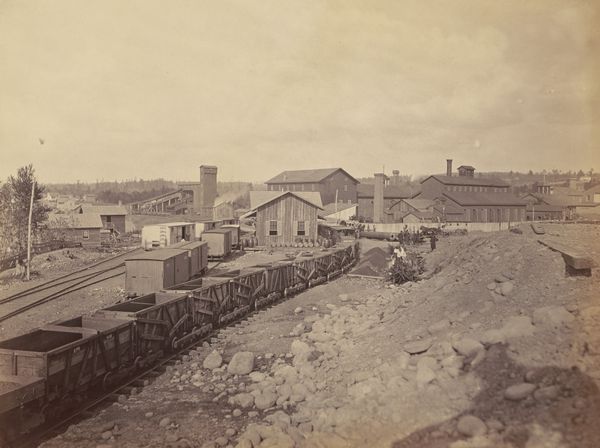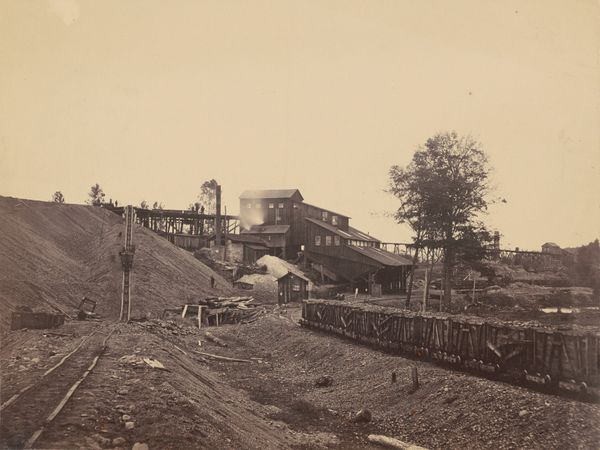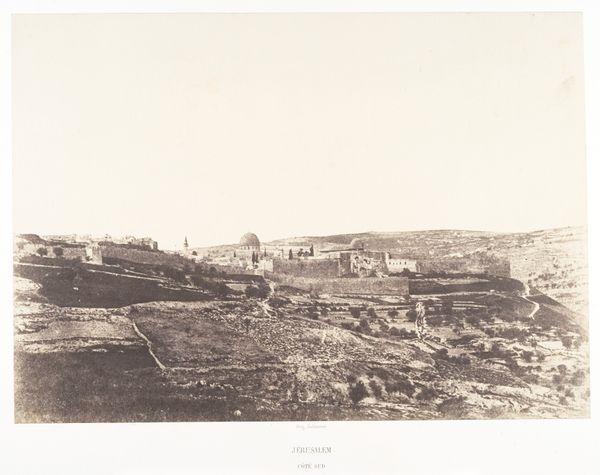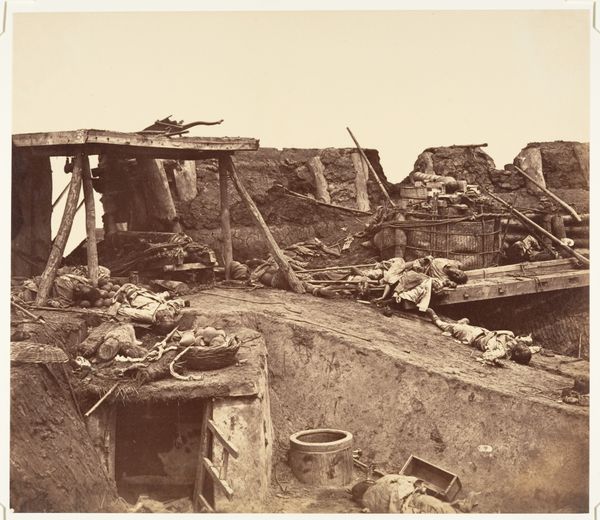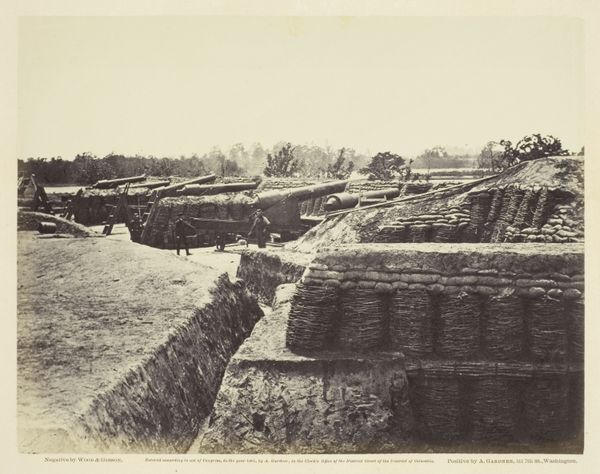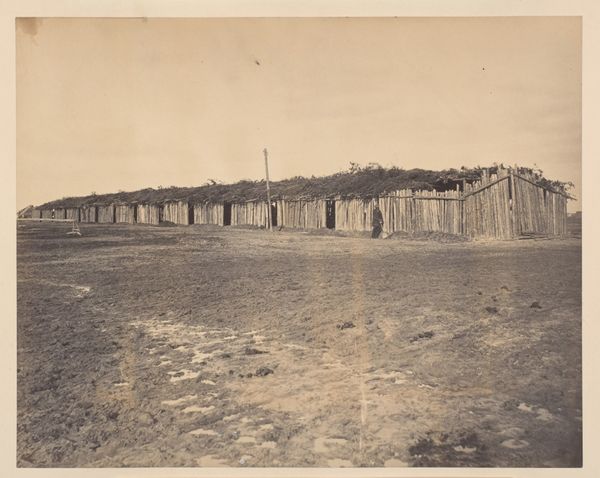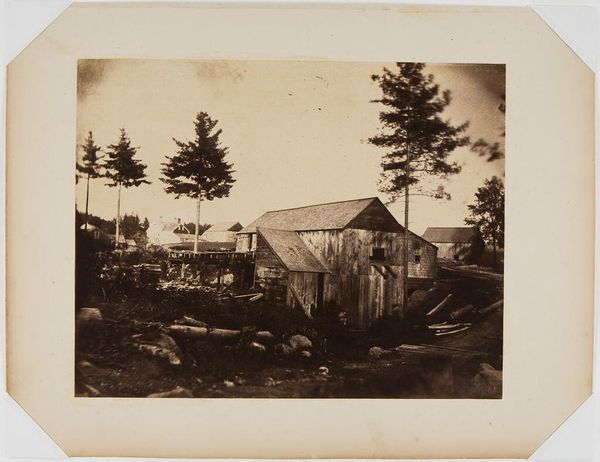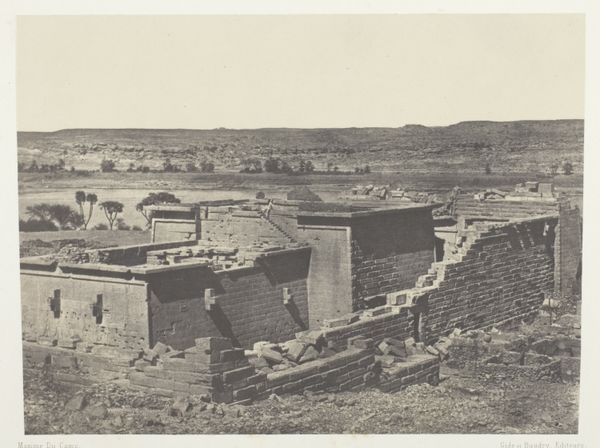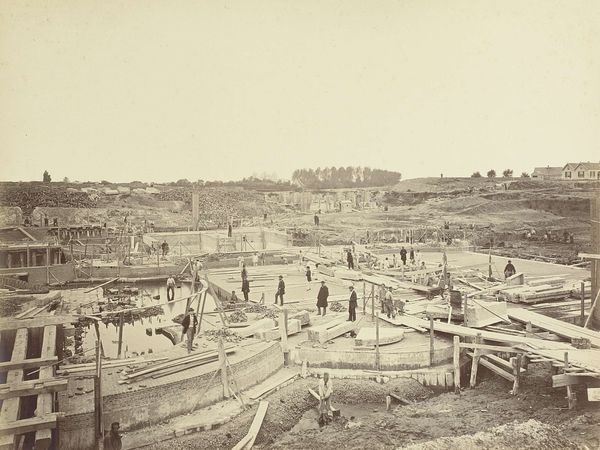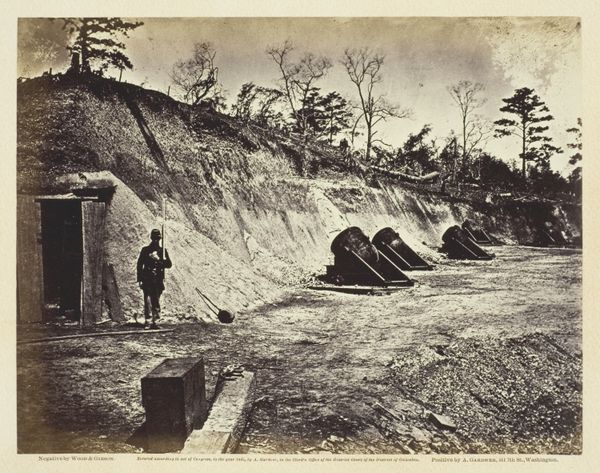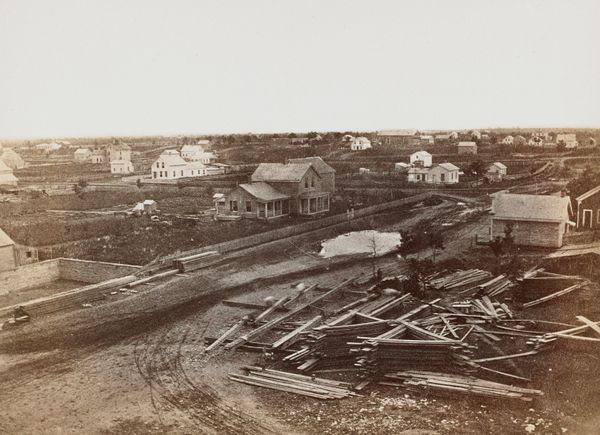
print, photography, site-specific, gelatin-silver-print
# print
#
landscape
#
photography
#
historical photography
#
site-specific
#
gelatin-silver-print
#
19th century
#
realism
Dimensions: image: 13.7 x 24 cm (5 3/8 x 9 7/16 in.) overall: 24.9 x 33.3 cm (9 13/16 x 13 1/8 in.)
Copyright: National Gallery of Art: CC0 1.0
Curator: This photograph, taken by Eadweard Muybridge in 1877, is titled "Acajutla". It's a gelatin-silver print, typical of his landscape work. Editor: There's a distinct stillness to it, almost melancholic. The sharp, receding lines of those trenches cut a deep path right through the heart of the composition. It's all sepia tones and quiet tension. Curator: Indeed, the composition directs our gaze, doesn't it? Muybridge was commissioned to document landscapes throughout Central America, capturing the environment and infrastructure projects primarily financed by American investors. Consider this within the context of 19th-century imperialism. Editor: That context certainly shifts the reading. I was initially drawn to the formal elements – the way the buildings are framed by the landscape, the subtle play of light and shadow on their facades. But understanding the socio-political motives…it undeniably adds another layer of complexity. The trenches now seem more ominous, perhaps alluding to exploited resources. Curator: Exactly. Muybridge's work became instrumental in shaping perceptions of these regions, subtly promoting expansionist agendas. The photographs, while seemingly objective records, also served very specific political and economic purposes. It is essential to always question how and why these landscapes were presented. Editor: Yet, the photograph itself maintains an artistic integrity. Look at the depth of field, the almost clinical precision. It's both documentary and artful. Perhaps it inadvertently reveals a sense of displacement? Those carefully placed buildings still appear stark against a vast, untouched landscape. Curator: The perspective provides both objective distance, which aligned with photographic conventions, but the perspective also shows an imposition on the land. As photography democratized image making, it shaped social consciousness. Editor: Seeing how a formal reading interacts with that background adds real insight to its lasting relevance. It highlights art's ability to transcend while embedding ideology. Curator: Precisely, this image of "Acajutla," offers a potent commentary on the photographer's, the financiers’, and our roles as we look at this image even today.
Comments
No comments
Be the first to comment and join the conversation on the ultimate creative platform.
